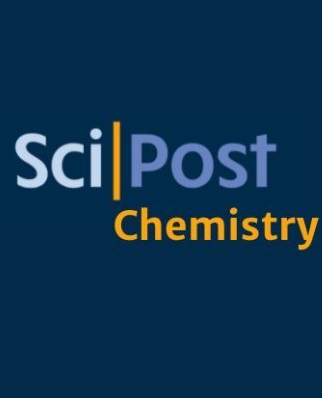一阶量子超导体-绝缘体转变的均场理论
IF 5.4
2区 物理与天体物理
Q1 PHYSICS, MULTIDISCIPLINARY
引用次数: 0
摘要
最近对强无序氧化铟薄膜的实验研究揭示了超导态和绝缘态(SIT)之间不寻常的一阶量子相变。这种转变的特点是临界点处的超流体刚度值从非零不连续地跃迁到零,这与通常与 SIT 相关的传统 "缩放情景 "相矛盾。在本文中,我们提出了一个理解这种一阶转变的理论框架。我们的研究方法基于两种截然不同的基态之间的竞争概念,这两种基态产生于最初被强无序局域化的电子对:超导态和库仑玻璃绝缘体。这两种基态由两个截然不同的阶次参数区分开来,表明在 $T=0$ 时,它们之间会出现不连续的过渡。当超导间隙 $\Delta$ 和库仑间隙 $E_C$ 的大小变得相当时,这种转变就会发生。此外,我们还将分析扩展到了非零的低温,并提供了在 $(T/\Delta,E_C/\Delta)$ 平面上的平均场 "相图"。我们的结果揭示了强无序超导体动感的自然上限。本文章由计算机程序翻译,如有差异,请以英文原文为准。
Mean-field theory of first-order quantum superconductor-insulator transition
Recent experimental studies on strongly disordered indium oxide films have revealed an unusual first-order quantum phase transition between the superconducting and insulating states (SIT). This transition is characterized by a discontinuous jump from non-zero to zero values of superfluid stiffness at the critical point, contradicting the conventional "scaling scenario" typically associated with SIT. In this paper, we present a theoretical framework for understanding this first-order transition. Our approach is based on the concept of competition between two fundamentally distinct ground states that arise from electron pairs initially localized by strong disorder: the superconducting state and the Coulomb glass insulator. These ground states are distinguished by two crucially different order parameters, suggesting a natural expectation of a discontinuous transition between them at $T=0$. This transition occurs when the magnitudes of the superconducting gap $\Delta$ and the Coulomb gap $E_C$ become comparable. Additionally, we extend our analysis to low non-zero temperatures and provide a mean-field "phase diagram" in the plane of $(T/\Delta,E_C/\Delta)$. Our results reveal the existence of a natural upper bound for the kinetic inductance of strongly disordered superconductors.
求助全文
通过发布文献求助,成功后即可免费获取论文全文。
去求助
来源期刊

SciPost Physics
Physics and Astronomy-Physics and Astronomy (all)
CiteScore
8.20
自引率
12.70%
发文量
315
审稿时长
10 weeks
期刊介绍:
SciPost Physics publishes breakthrough research articles in the whole field of Physics, covering Experimental, Theoretical and Computational approaches. Specialties covered by this Journal: - Atomic, Molecular and Optical Physics - Experiment - Atomic, Molecular and Optical Physics - Theory - Biophysics - Condensed Matter Physics - Experiment - Condensed Matter Physics - Theory - Condensed Matter Physics - Computational - Fluid Dynamics - Gravitation, Cosmology and Astroparticle Physics - High-Energy Physics - Experiment - High-Energy Physics - Theory - High-Energy Physics - Phenomenology - Mathematical Physics - Nuclear Physics - Experiment - Nuclear Physics - Theory - Quantum Physics - Statistical and Soft Matter Physics.
 求助内容:
求助内容: 应助结果提醒方式:
应助结果提醒方式:


